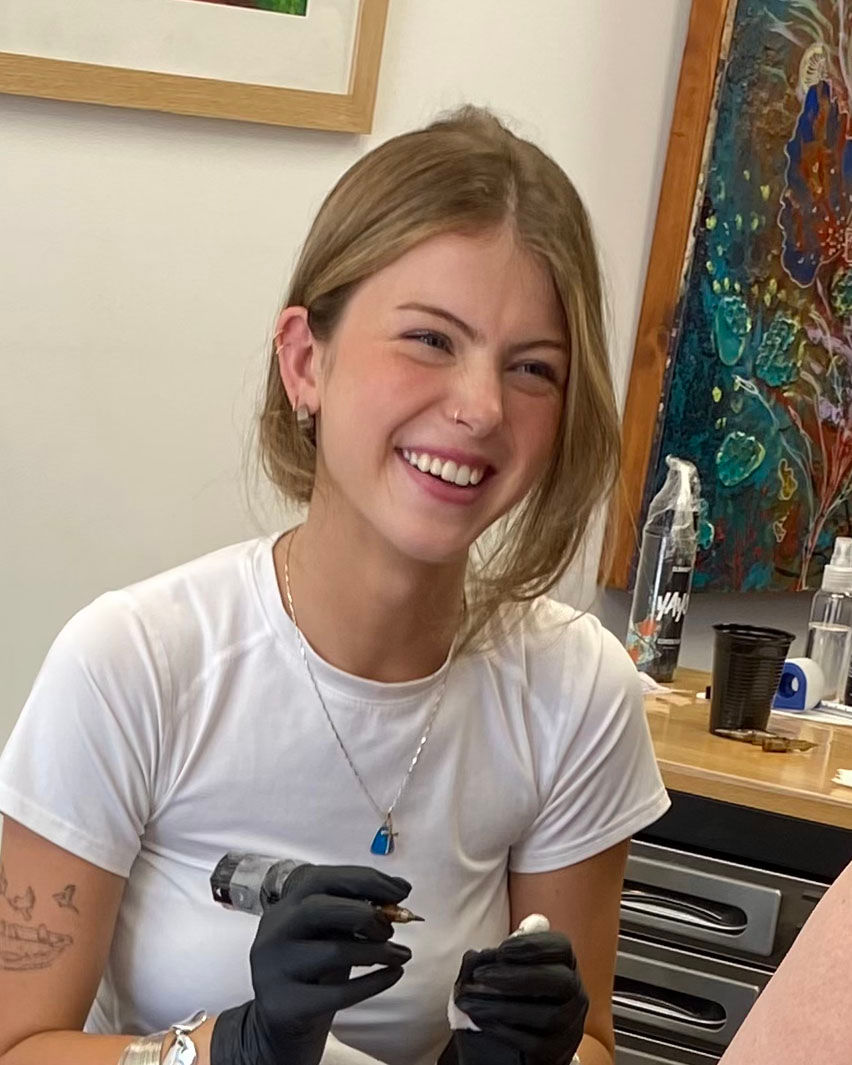What happens to your tattoo as you age?
- Marcu

- 24 hours ago
- 3 min read
Updated: 3 hours ago

Table of contents
Introduction: Your tattoo’s future
You got the ink — now you’re wondering how it will look in 10, 20, or even 50 years.
Will it still have crisp lines? Will the colour hold up?
Or will it fade, blur, or stretch?
Let’s talk about what really happens to tattoos over time — and how to keep yours looking strong, meaningful, and beautiful as the years roll on.
Why this topic matters
A tattoo isn’t just a moment — it’s a lifetime companion.
It evolves with your body, your lifestyle, your habits.
Understanding what to expect before you get tattooed helps you:
• Choose smarter placements
• Work with the ageing process, not against it
• Commit with confidence
The science behind skin and ink
Tattoos live in the dermis, the second layer of your skin. This layer holds the ink in place — but it also ages just like the rest of you.
As you age:
• Skin loses elasticity
• Collagen and fat layers decrease
• Skin becomes thinner and more textured
This natural ageing process affects how tattoos sit, stretch, and fade.
Common Changes to Expect Over Time
While each person is different, here are typical tattoo ageing changes:
🟡 Fading — UV exposure breaks down pigment over time
🔵 Blurring — lines may soften slightly, especially in high-movement areas
🔴 Discolouration — lighter inks (like yellow or pastels) may change faster
🟢 Stretching — weight fluctuations, pregnancy, or muscle gain can shift tattoos
None of this means your tattoo will look bad — just different. And often, beautifully worn-in.
Areas of the Body That Age Best
Some areas hold tattoos better than others over decades.
Here are top picks for longevity:
✅ Upper arms
✅ Outer forearms
✅ Back (especially upper)
✅ Thighs
✅ Calves
Areas to be cautious of include:
⚠️ Hands, feet, neck, stomach, inner fingers
These zones stretch more, see more sun, or have thinner skin.
How to Choose Age-Resistant Tattoo Styles
Some designs hold up better than others.
💡 Bold lines outlast fine linework
💡 Black and grey often age better than lighter colour tattoos
💡 High-contrast designs are more readable long term
💡 Simpler shapes tend to age more gracefully
Your artist can also adjust depth, line width, and shading to optimise for longevity.
Touch-Ups, Reworks, and Longevity
A tattoo is a long-term commitment — but it’s not static.
Touch-ups can:
• Refresh faded lines
• Repack worn colour
• Sharpen blurred detail
Some clients opt for reworks — adapting the original design after 10–20 years, adding meaning or visual clarity.
Think of it like preserving a classic car: a bit of care goes a long way.
Client Stories: Tattoos 10, 20, 30 Years Later
“My shoulder tattoo is 27 years old and still looks great. I’ve had one touch-up and avoided the sun — that’s it.”
— Clare, Cornwall
“I gained weight after my first piece, then lost it again. The tattoo changed shape, but weirdly… I love it more now.”
— James, Plymouth
These stories remind us: tattoos don’t have to stay perfect — they can grow with us.
Final Thoughts: Ink That Grows With You
The key takeaway? Tattoos age — but that doesn’t mean they age badly.
With smart design, good aftercare, and a bit of foresight, your tattoo can remain a meaningful, beautiful part of your body for life.
They’re not just snapshots — they’re evolving stories.
And like all great stories, they get better with time.
FAQ
Q: Will my tattoo look bad when I’m older?
A: Not if it’s done well, placed wisely, and maintained. Ageing changes it, but many tattoos look even better with time.
Q: How long before a tattoo starts fading?
A: Visible fading usually starts after 5–10 years, depending on sun exposure, ink quality, and aftercare.
Q: Can I get my tattoo refreshed after 20 years?
A: Absolutely. A good artist can revive old ink through touch-ups or creative reworking.



Comments